BA (Hons) Visual Communication at Arts University Bournemouth
Don't wanna be here? Send us removal request.
Photo

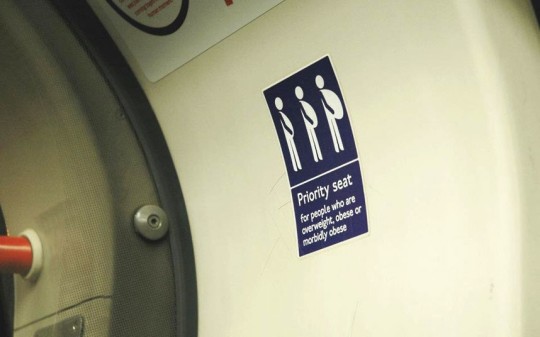



These guerilla stickers spotted around the London Underground sets a comedic tone to otherwise standard transport stickers. The aspect of bring attention to these mundane stickers is quite interesting as it brings attention to the message a lot more than it would have when it is representative of the original information.
3 notes
·
View notes
Photo


A Depaul Nighstop poster which changes meaning depending on the perspective you see it - a powerful use of double-entendre.
0 notes
Link
An interesting and informative YouTube channel which deconstructs films, from their use of camera techniques, editing techniques, sound design, and a few more techniques. This is useful in understanding the language of film, and maybe then I can apply it to my idea.
0 notes
Link
Researching through Rene Descartes and philosophy, brought me towards thought experiments. Most notably the famous thought experiment “If a tree falls in the forest does it make a sound?”
This is especially an interesting subject to research as the questions could be yes or no. It all depends on your perspective: Sound as in physical vibrations or Sound as in human perception “If someone is there to hear it, it makes a sound, if not, it causes rapid movement of particles.”
0 notes
Link
Looking at perception and philosophy, I was interested at the theory of Solipsism. This is the philosophical theory of “nothing exists but the individual’s consciousness.” The famous Philosopher Rene Descartes argues that our perceptions are easily misguided in aspects of dreams or hallucinations and such, Descartes developed his famous philosophy of “Cogito ergo sum” (I think, therefore I am). This means that the individual could only truly prove that itself is thinking, and for that it has to exist to be thinking - thus being one of the few things that truly exist in reality.
0 notes
Photo
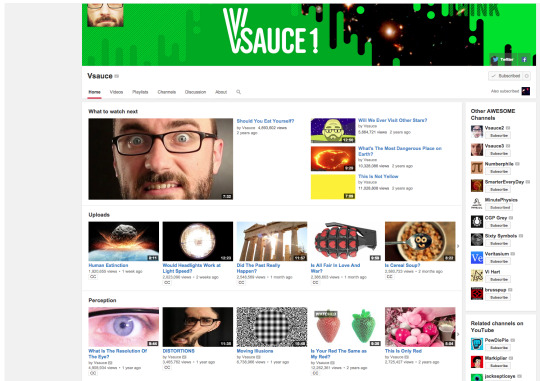
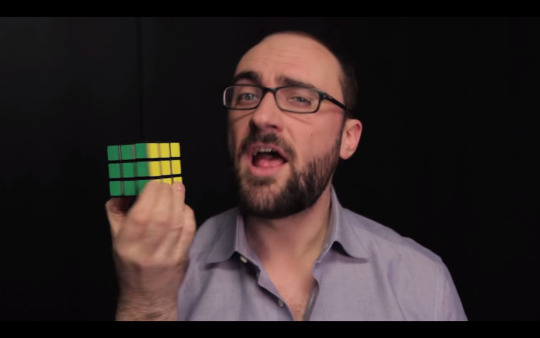
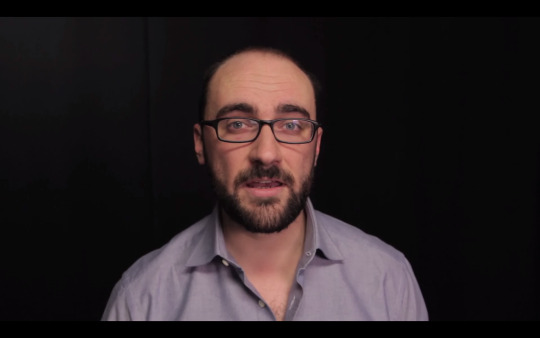
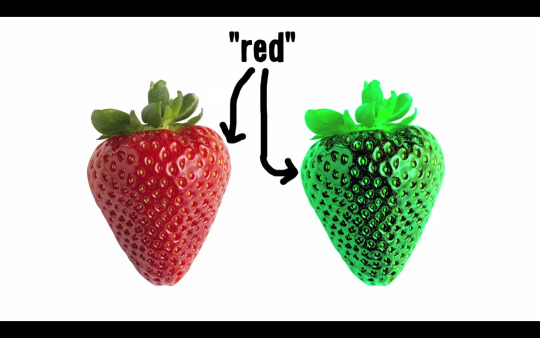
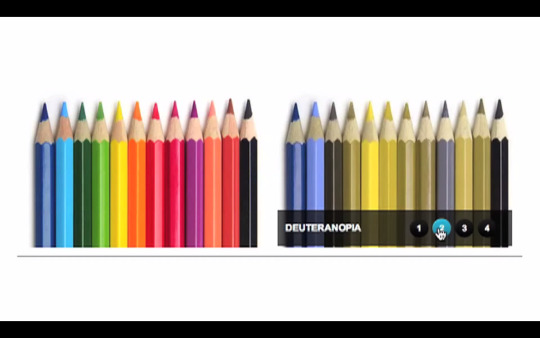
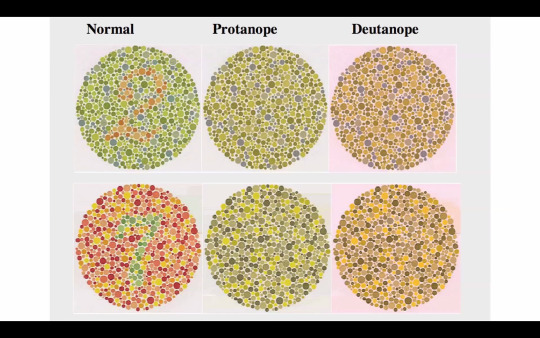
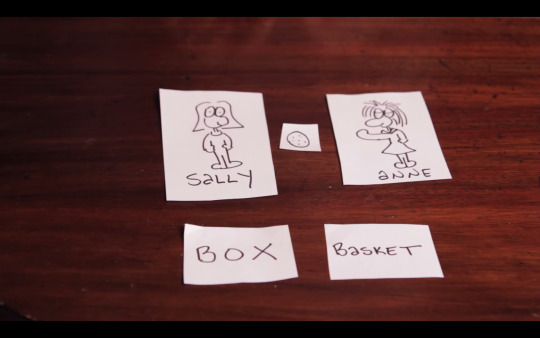
Vsauce - Is your red the same as my red?
From looking back at people who attempted to describe colours to Tommy Edison, people use different materials and textures to aid them with the description. What I found out that people were also disagreeing, for example, an individual described the colour grey as cold and smooth, whereas the next person would say that grey is light and fluffy, like cotton balls.
“Colour is an illusion, colours are created inside are heads.” (Vsauce, 2013)
Michael Stevens of Vsauce raises the argument that there is a possibility that colours are created within our heads and they do not exist in the outside world like “gravity and protons” do. Colours that we see are created from light produced by the electromagnetic spectrum and our brains process that to what we call colours.
“However I cannot measure or observe the experience of a colour inside your mind.” (Vsauce, 2013)
Stevens points out that our experience of colour isn’t always the same, people who are colourblind is a great example of when people perceive that a strawberry is Red, but in actual fact it appears as Green to them.
“We are all alone with our perceptions, we are all alone within our own minds. We can agree that chocolate tastes good, but I cannot climb into your consciousness and experience what chocolate tastes like to you. I can never know if your red looks the same as my red.” (Vsauce, 2013)
There is no physical way of knowing this factor, as we cannot experience this sensation in another persons body apart from our own. Michael Stevens concludes with the idea of staying “human” by being curious and always asking to generate a debate on the subject matter.
The general contextual research into perception brings up more unanswered questions. This idea that Perception is subjective to the persons experience and not a universal outcome is confusing to get my head around, but it is beneficial for the development of my project.
2 notes
·
View notes
Photo


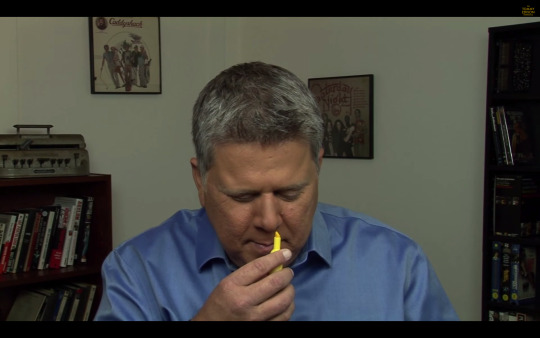
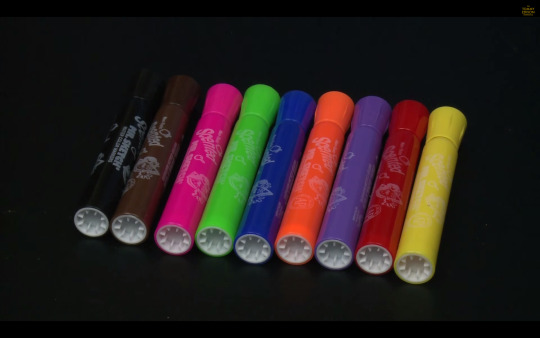
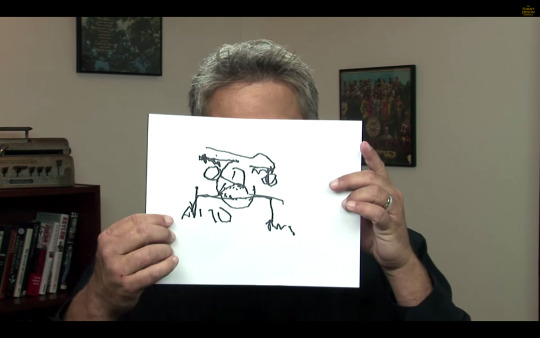
Tommy Edison
Pushing further the concept of perception, it made me think of the question, “Can you explain the colour red to a blind person?” My initial thoughts are that it would be situational as it would vary. It would depend on whether the person have had an idea of what colour is, or if they have seen colour before. This would only apply towards the individuals who have lost their eyesight later on their life and would not apply to those who were blind since birth. As people who were blind since birth have no perception of what colour or sight is, it would be impossible to explain what different colour looks like to a blind person, as it does not exist in their world. However Tommy Edison, a blind film critic, encouraged people to try explaining what certain colours would look like.
“Green is very springlike, it’s very, ah, leafy, so if you imagine tree leaves and what not. I always imagine that’s how green feels. I like green because they say it inspires creativity, so if you thought of a really creative moment in your life, that’s what green looks like.” (TommyEdisonXP, 2014)
You can’t explain the colour of something by using a colour, at least to a blind person it would be stupid to attempt this. This is when appealing towards their other senses (smell, touch, sound) would be the correct approach, through this the blind individual can associate colours to a sensation. Though this could have conflicting representations, due to colour theory, red can be seen as dangerous and should be avoided, but red could also be represented as passion and love. In the video where he attempts to guess the colour of a series of scented colour markers, he does this through the association of colours.
“This smells rather minty, so therefore it’s going to be green.” (TommyEdisonXP, 2013)
Edison produces a number of videos detailing in lighthearted approach his experiences and perceptions of being blind. From how he was told he was blind, attempting to draw objects, guessing colors of scented colour markers, to explaining as to what a blind person would see. He answers these questions candidly and it is quite fascinating to pick apart his brain of his experiences of what certain perceptions of a blind person would have.
Tommy mentioned during his “Can Blind People Draw?” video challenge, when he was asked to draw intangible objects like a rainbow, that it is impossible for him to draw something that he has never experienced before.
“...those things are a little bit tricky for me because I have never touched them or felt them so I don’t know what they are. So I think it should only be the things I’ve experienced...” (TommyEdisonXP, 2013)
Being born blind, that is what Edison has ever experienced. He has no perception of sight, so from his point of view it is normal in comparison to what we would think.
“It’s our own normal, your life is completely normal to you...” “...that was your thing. But this is my normal, I just couldn’t see.” (TommyEdisonXP, 2012)
“You have to see to know what black is, right. So therefore I don’t see anything, I don’t have a colour palette. When you guys can’t see anything that’s what you see.” (TommyEdisonXP, 2013)
Learning this information has definitely been an insight to the subject matter. It is one of those things that I would not typically understand on my own, so it was brilliant that Tommy Edison has set up a YouTube community detailing his experiences. This contextual research from Tommy Edison about having no experience of colour and sight intrigues my concept of perception of the senses. Developing this notion of perception, I also think that the Absence of Perception is a valid avenue to head towards.
0 notes
Photo
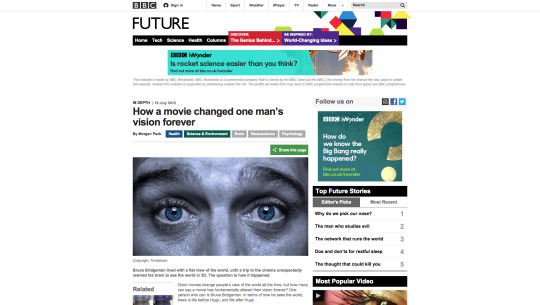
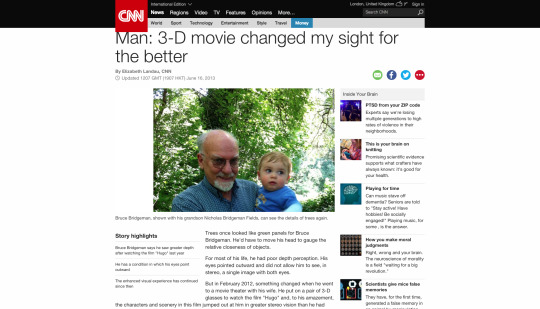

Bruce Bridgeman
As I have been working backwards (establishing the outcome before the concept), I used the knowledge I have gained through the “Developing a Brief” workshop to develop a concept of which I wish to pursue. Bruce Bridgeman, a professor of psychology and psychobiology suffered from stereo blindness - a condition where the person did not have the ability to perceive stereoscopic depth, resulting to a 2-dimension vision.
“When we’d go out and people would look up and start discussing some bird in the tree, I would still be looking for the bird when they were finished,” he says. “For everybody else, the bird jumped out. But to me, it was just part of the background.” (Bridgeman, 2012, BBC)
However in 2012 Bridgeman watched the film Hugo (2011) in 3D and through this process, his 3-dimensional vision was linked. Though his case occurs rarely, it does not work for every single person who suffers from stereo blindness.
"When it happens, it's very sudden and pleasant, to see things in 3-D that have been flat for all your life" (Bridgeman, 2013, CNN)
I find this story intriguing as Bridgeman gained a new perception that he never had experienced before as he was born stereo blind.
This is the starting point I have chosen to push forward. This has urged me to think of creative challenges that I can potentially be solving such as, how do I visualise this core theme of senses perception? What does the lost of a perception or how does obtaining a new perception translate in my creative practice of visual communication. What medium is best to explore this concept, through digital-based media, or through print-based media.
0 notes
Photo


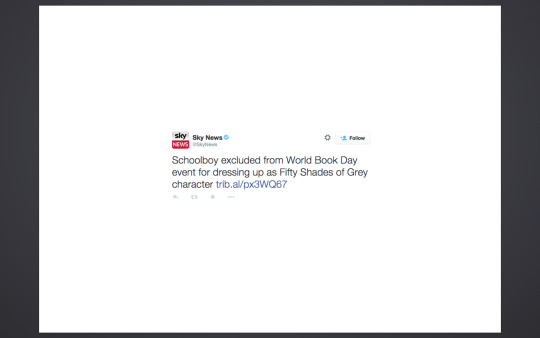
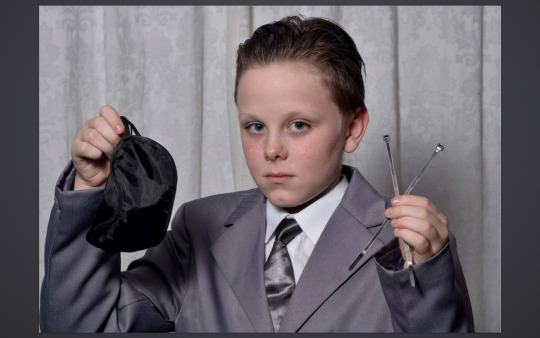
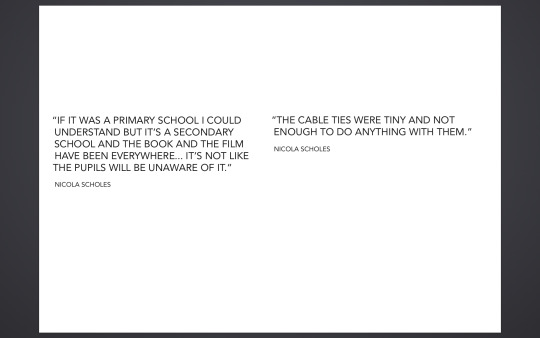
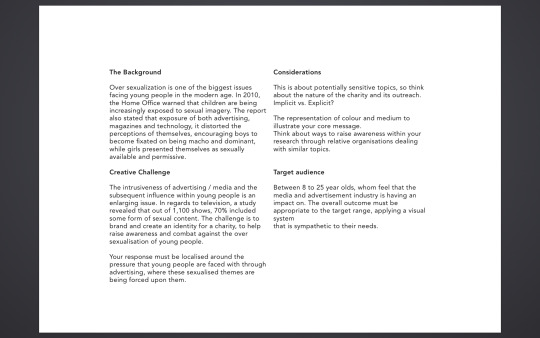
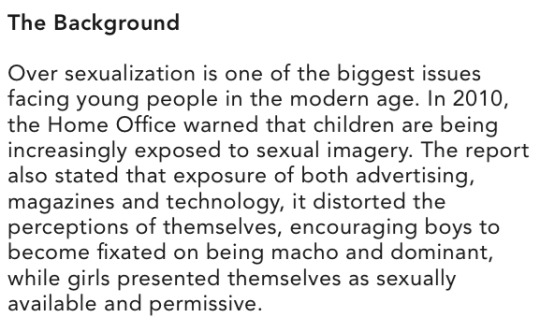
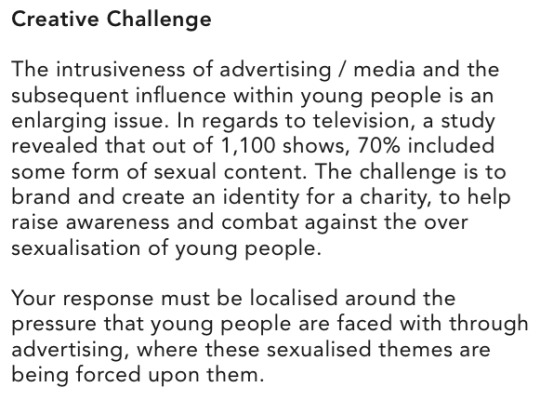
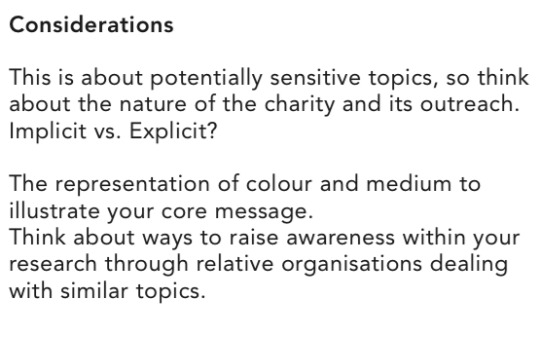

Developing A Brief
In groups we worked on a day workshop to develop a brief from a piece of tweet linking back to a news article. Our chosen tweet was from SkyNews detailing an incident of an 11 year old boy who dressed up as Christian Grey (50 Shades of Grey) and was banned in participating for their World Book Day event. Taking the article as a starting point, we outlined the facts and issues concerning this matter, as well as deconstructing its core themes. There were conflicting arguments, raising the issue of murder is typically more acceptable as a form of entertainment and sex is seen as unacceptable. With these erotica literature, we took our concept down the over sexualization avenue affecting the youths of today. The suggested brief format is similar to the D&AD New Blood Award briefs where it consists of a Background, Creative Challenge, Considerations, and Target Audience. This format is simple to understand, and allows us to truly consider the information and structure of a brief.
0 notes
Link
In giving Punctuations movement and shape, I looked at compositional techniques to give it more depth and meaning. I looked at the Principles of Design, Elements of Art as well as Cinematography to help me bring the similarities and differences together.
0 notes
Photo

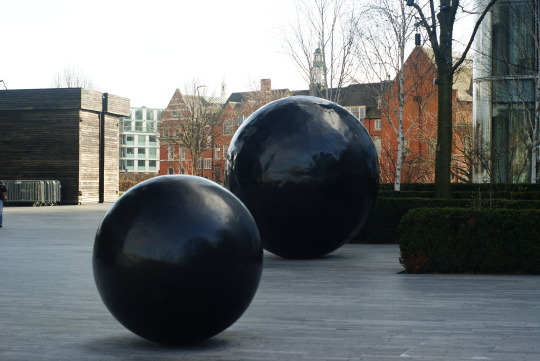
“If these sculptures are full stops, then we, walking amongst them and the buildings that frame them, become like the missing letters and words of a sentence. Banner gives us in solid form the pause, the silence, the moment we draw breath and reflect. The full stop is both a beginning as well as an end.”
Fiona Banner’s Full Stop sculptures brings an audience towards punctuations, bringing them in a space invokes a strong installation. As I was experimenting with punctuations, it was discussed whether I could bring these punctuations and give them a significant emphasis like Fiona Banner has done.
0 notes
Photo

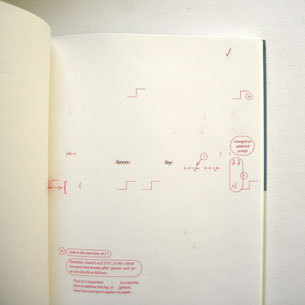


The Ghost in the Fog is a book full of editorial marks, notes and edits which symbolizes the changes a book undergoes until its production. This observation of how books are produced and edit is an extremely fun and an experimental outcome.
0 notes
Photo
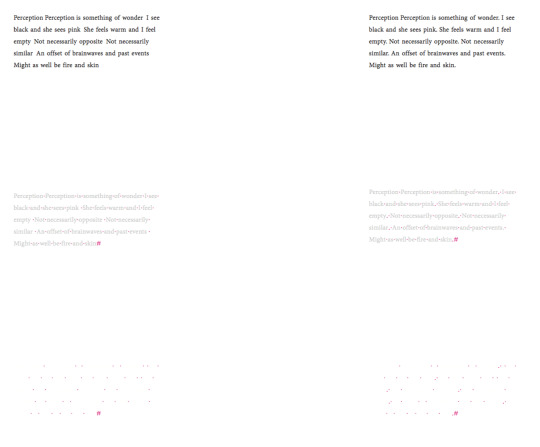


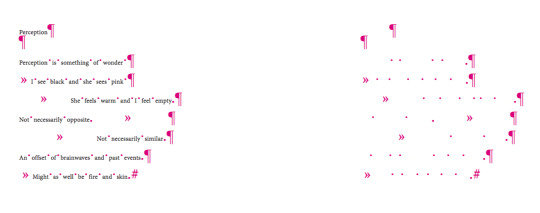

Quick experimentation on how can I apply perception in with typography. Using hidden characters and punctuations that people would normally overlook or don’t pay much attention to.
0 notes